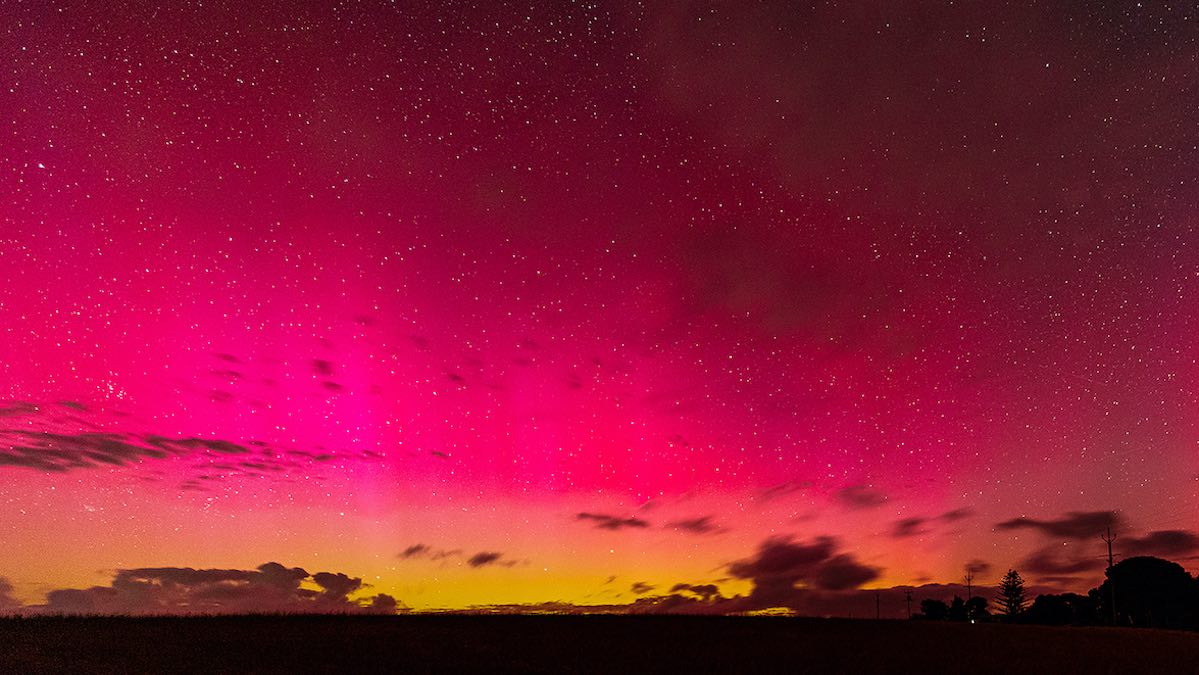Image: Robert Lang Photography
Shutterbugs and stargazers across Australia were treated to a spectacular celestial display on the night of December 1st as the Aurora Australis, or Southern Lights, made a rare appearance in South Australia.
This breathtaking natural phenomenon, typically reserved for extremely remote areas, was visible across Victoria, Tasmania, southern Western Australia, parts of South Australia, and even in far western New South Wales.
In South Australia, it graced the night sky over the Lower Eyre Peninsula, casting a tapestry of red, pink, and purple hues across the night sky.
The event, although particularly fierce in Tasmania, was a special treat for South Australians who were lucky enough to witness it.
One resident, Robert Lang, captured the event from his own backyard in the Lower Eyre Peninsula.
“This was like nothing I have ever seen before and from the comforts of my own backyard. I have travelled in the past to the southern coasts to try and capture the lights on previous attempts with not much luck, so this was really something to witness,” Lang said in a Facebook post.
“One of the best perks to living out of town is the clearer skies from no light pollution from the towns or cities. Anyone trying long exposures for night sky photography knows what I am talking about.”
The phenomenon behind the Aurora Australis is driven by powerful solar storms that propel solar winds towards Earth. When these solar winds interact with the Earth’s magnetic field, they trigger reactions with gases like oxygen and nitrogen, resulting in the creation of photons or tiny explosions of light. These luminous explosions paint the night sky with a vivid array of colours, forming the Southern Lights (Aurora Australis).
Here’s some amazing images capture of the Aurora Australis the other night:




For those who aspire to capture this extraordinary phenomenon on camera like the pictures above, here are some tips:
- Find a location with minimal light pollution.
- Have the right equipment ready, such as a tripod, a lens with a wide aperture to let lots of light into the sensor, and a camera good at taking low-light photos. Also, newer mobile phones can also capture the light show.
- Ensure your camera is set to ‘manual’ mode, ISO between 1600-6400, shutter speed between 5 to 15 seconds, and the lens to the lowest f-number/widest aperture
Click here for more information on the Southern Lights.





















